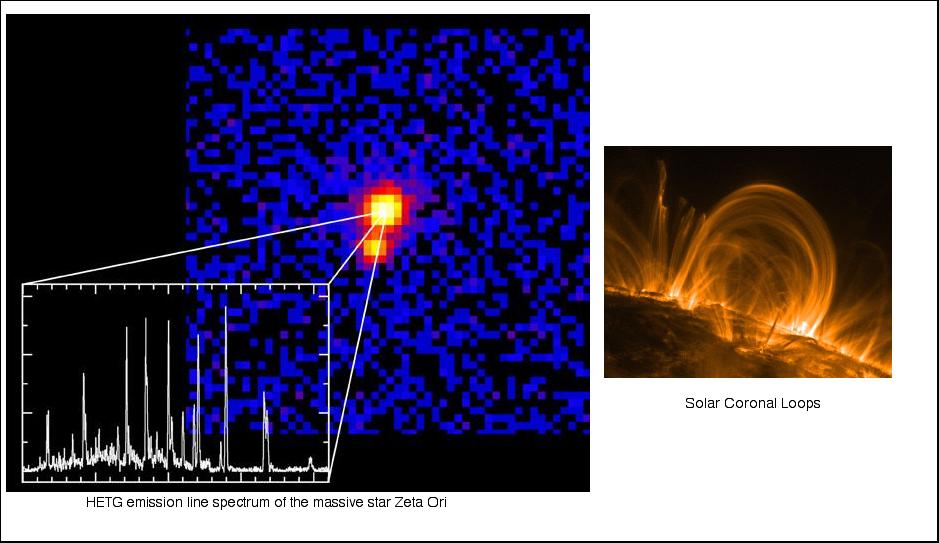
 Credit: NASA/CXC/W. Waldron, J. Cassinelli; right M. Aschwanden et al. (LMSAL), TRACE, NASA
Credit: NASA/CXC/W. Waldron, J. Cassinelli; right M. Aschwanden et al. (LMSAL), TRACE, NASA
Dynamos, Coronae and Massive Stars?
Stars like the sun produce X-ray emission in a region of their outer
atmosphere (called the corona)
due to variations in their magnetic fields powered by bulk motions of hot
plasma in their interiors. This is the so-called "dynamo effect", since
it's similar to the ways an electric dynamo generates a magnetic field
through the motion of charged particles. The stellar corona itself is
thought to be composed of large numbers of hot loops of gas, as shown in
the picture above right. Thus, for stars like the sun, study of the X-ray
emission indicates something about the state of the star's hidden interior.
Stars which are at least 10 times as massive as the sun are also X-ray
sources, but these stars are thought to generate X-rays by an entirely
different process. These stars all possess massive, outflowing "stellar
winds", and it's thought that these winds convert a portion of their motion
energy into heat, raisin
g the temperature of some of the wind far from the
star's surface to millions of degrees. A new observation with the Chandra High Energy Transmission
Grating (HETG) of the massive star Zeta
Ori, shown above left, suggests that this picture may be more
complicated. One interpretation of the HETG "emission line" spectrum
(shown in the graph above left) is that the X-ray emission lies much closer
to the stellar surface than previously believed, perhaps in giant loops of
the type seen extending off the surface of the sun. If so, then very
massive stars may be more similar to stars like the sun, perhaps possessing
"stellar dynamos" in their interiors too. Since this idea is a fundamental
re-thinking of the internal workings of massive stars, right now
astronomers are cautious. It's hoped that more observations of stellar
X-ray spectra with Chandra and XMM-Newton will help resolve this matter one
way or the other.
Last Week *
HEA Dictionary * Archive
* Search HEAPOW
* Education
Each week the HEASARC
brings you new, exciting and beautiful images from X-ray and Gamma ray
astronomy. Check back each week and be sure to check out the HEAPOW archive!
Page Author: Dr. Michael F.
Corcoran
Last modified May 26, 2001


